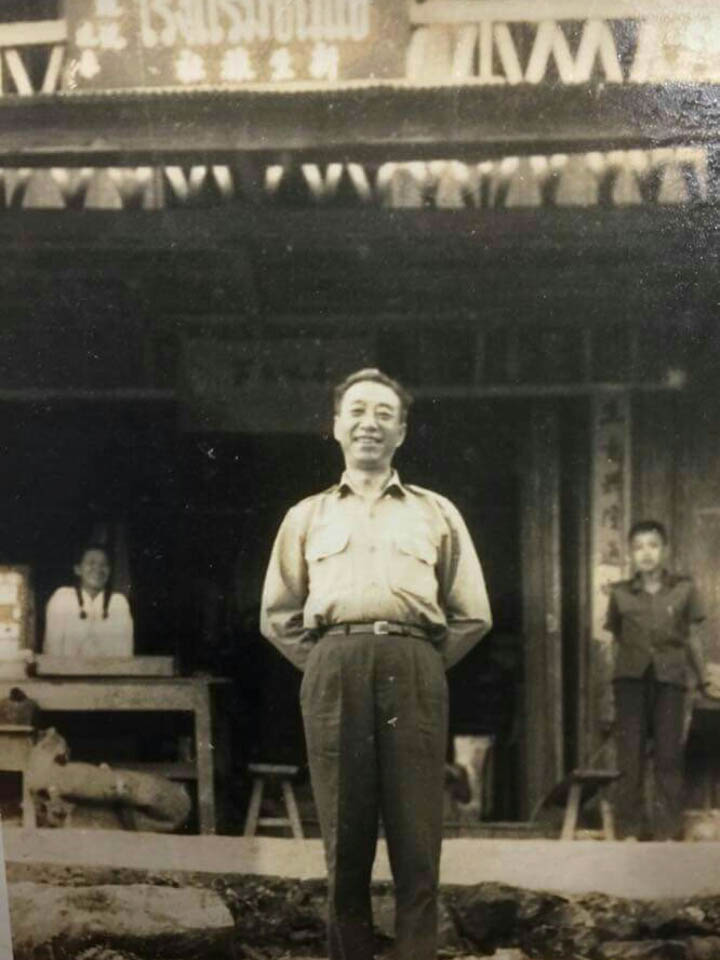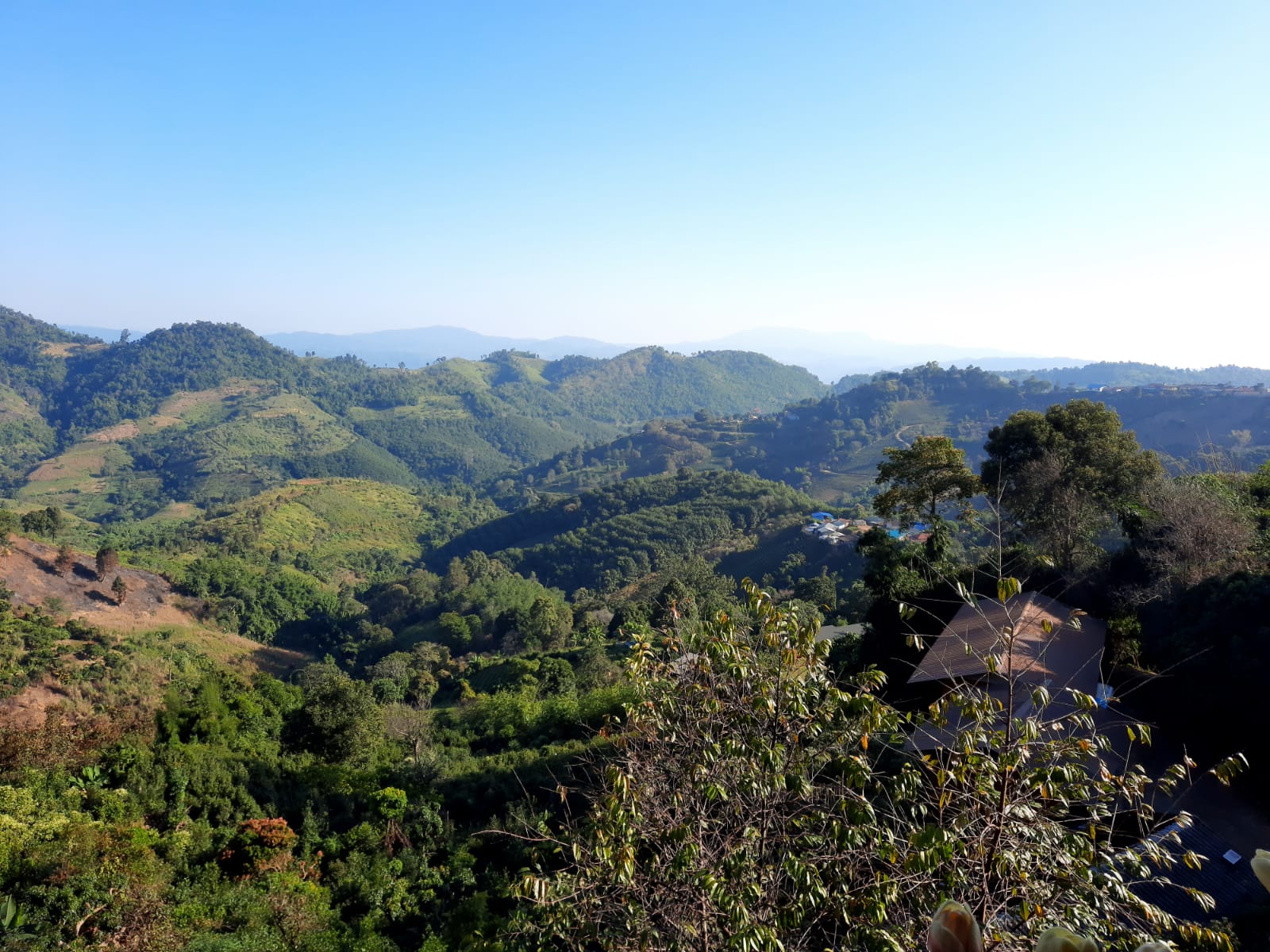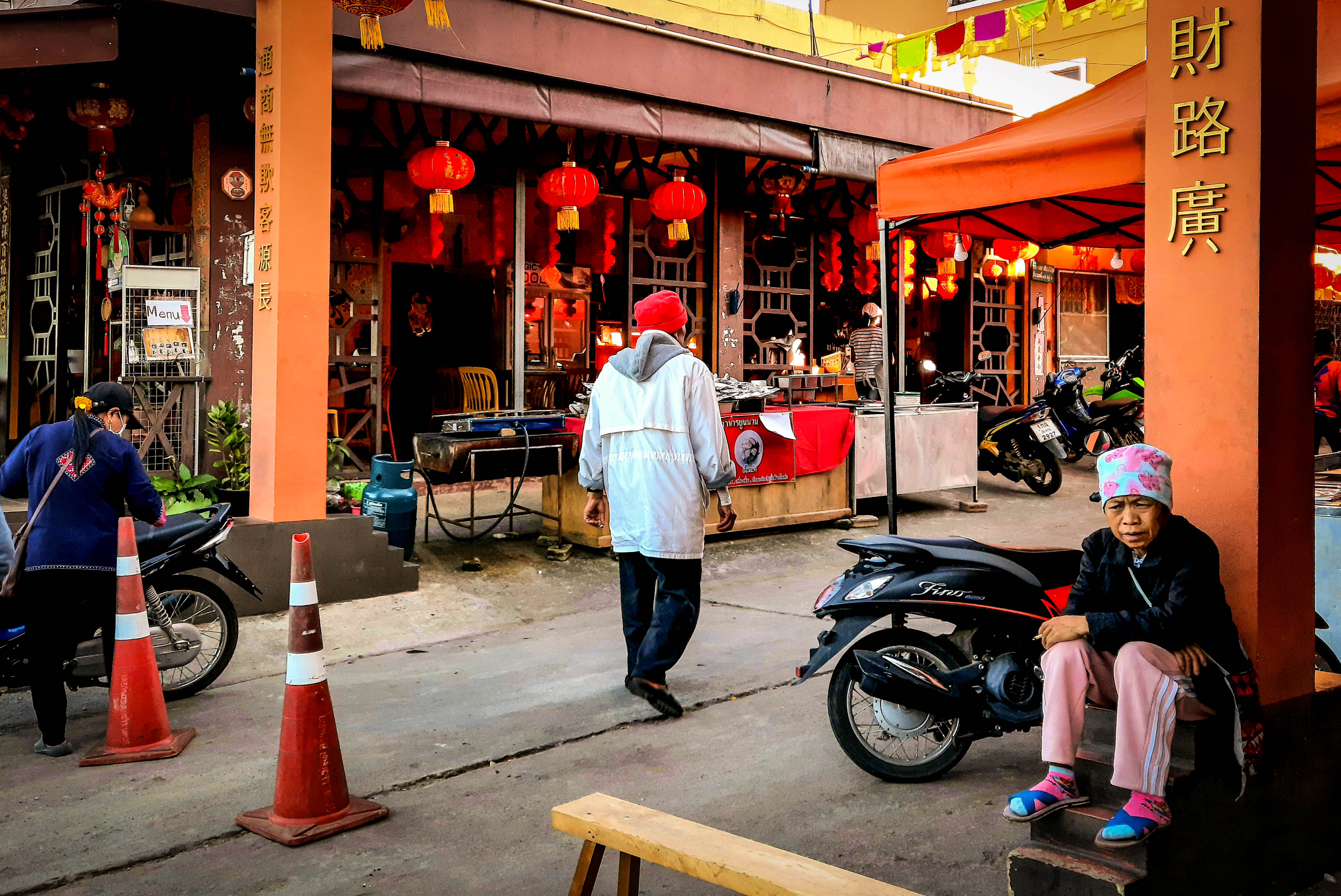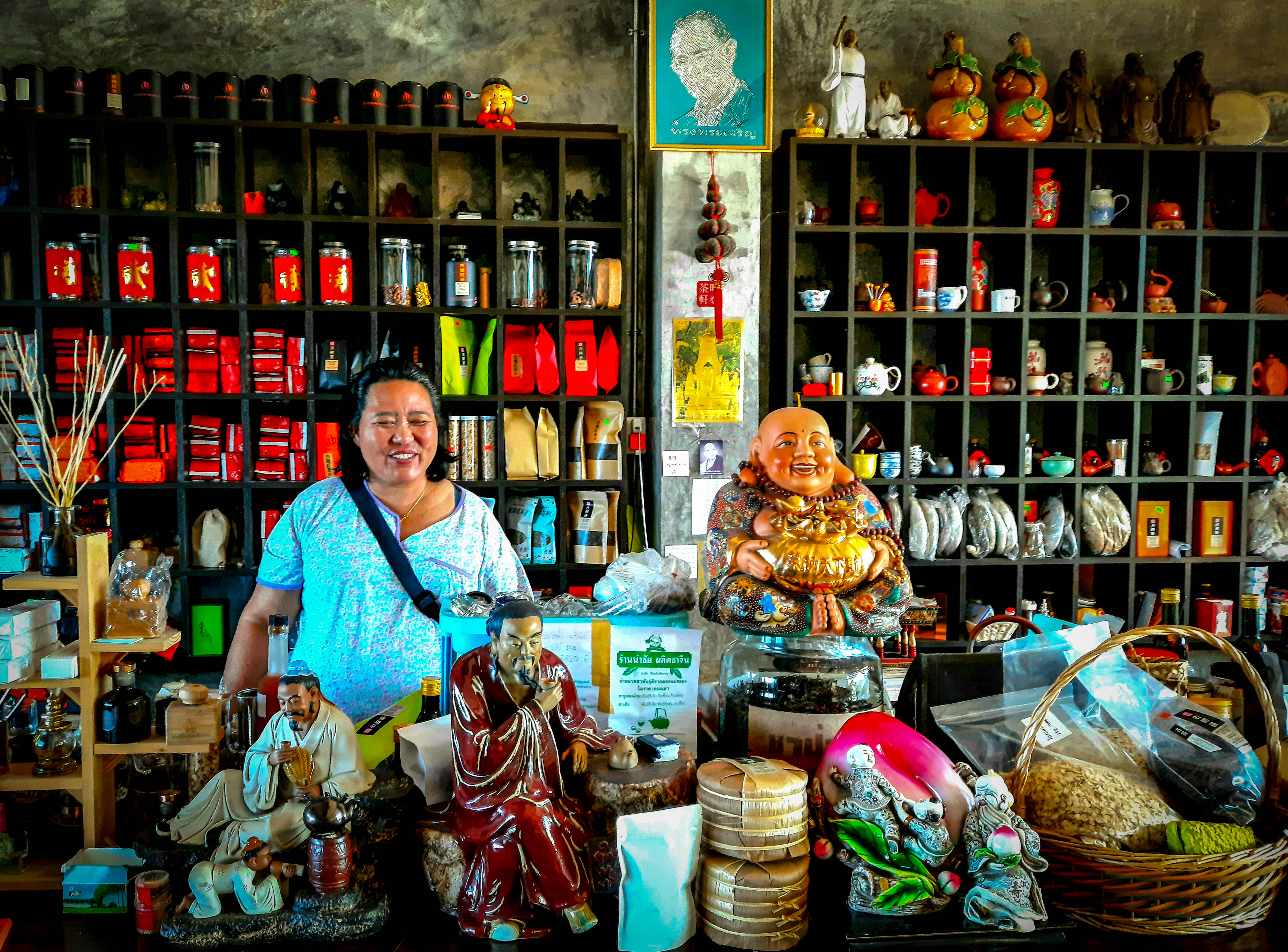How CIA-backed Rebels Helped Fuel Southeast Asia’s Billion-Dollar Drug Trade
May 28, 2021MAE SALONG, Thailand – With its streets lined with restaurants serving steaming bowls of Yunnanese noodles, red lanterns hanging outside homes, and Mandarin as the lingua franca, Mae Salong is more Chinese enclave than Thai town.
But there’s a fascinating history of geopolitics, war and the roots of Southeast Asia’s billion-dollar drug trade hidden in the picturesque place in northern Thailand, home to only a few hundred people and high up in the hills of the Golden Triangle, which also straddles Myanmar and Laos.
Chaihua Ho, or Mr Ho as he prefers to be called, runs a small guesthouse and restaurant on Mae Salong’s main road, within earshot of the town’s bustling market, which sells sizzling snacks and bottles of Chinese beer. Sitting at a table outside his restaurant in November, as the sun fell over the surrounding mountains, he took a sip of whiskey and talked about his father, Huan Xian.
“My father taught me that to be a man, I must drink,” Ho said, emptying his glass before quickly refilling it.
Born in a village in China’s Yunnan Province, Huan Xian was a soldier in a “lost regiment” of the nationalist Kuomintang Army, fleeing the homeland with his wife in 1949 after defeat at the hands of Mao Zedong’s Communists in the Chinese Civil War.

While most KMT troops escaped seawards to Taiwan, thousands of fighters from its 93rd Division, stationed in southerly Yunnan, were cut-off from their brethren, and chased by Mao’s troops into Burma, as Myanmar was then called. From there they plotted an attempt to re-take China from the Communists.
By mid-1950, the KMT soldiers had settled at Mong Hsat, a dusty town straddling the Thai-Myanmar border. There was little of import in the town, except a discarded runway leftover from World War II, which the nationalists quickly upgraded.
Soon the old airfield was welcoming planes from Taiwan and Bangkok, bringing with them troops and supplies for the planned return to China. But in order to fund this ambitious effort, going in the other direction were large supplies of opium — the sticky brown sap that is the key ingredient in heroin - that had been cultivated in the Shan hills.

The KMT’s attempts to go home ultimately failed, but the funds raised to support their efforts were a major factor in the Golden Triangle’s booming narcotics trade in the second half of the 20th century, according to experts.
That trade is now worth an estimated $70 billion per year, largely through the peddling of methamphetamines. As a result of the KMT’s involvement in the drugs trade, “modern aircraft replaced mules, naval vessels replaced sampans, and well-trained military organizations expropriated the traffic from bands of illiterate mountain traders,” American historian Alfred W. McCoy wrote in his 1972 book The Politics of Heroin.
“Modern aircraft replaced mules, naval vessels replaced sampans, and well-trained military organizations expropriated the traffic from bands of illiterate mountain traders.”
This surge in Southeast Asia’s narcotics trade was also achieved with at least some input from America’s Central Intelligence Agency (CIA), according to McCoy. Keen to prevent Mao’s Communist message from spreading into Burma, and from there mainland Southeast Asia, the CIA offered support to the exiled Chinese nationalists, including transportation assistance through Civil Air Transport – the CIA-owned airline that would later become the notorious Air America, which transported U.S. supplies and forces into Vietnam, and the secret war in Laos.
Burmese military intelligence reports at the time also noted that the nationalist troops were sporting brand-new American arms in the form of machine guns, bazookas, mortars, and anti-aircraft artillery, McCoy wrote.
After a series of battles, the Burmese military eventually ousted the nationalist soldiers from their territory militarily in the early 1960s.
Ho said he was born in a KMT camp in Burma in 1958. His family were among this exiled group looking for refuge, settling in Mae Salong just across the border in Thailand in late 1961, where his father opened what he claims was the town’s first hotel, which over the next few decades welcomed an array of soldiers and businessmen travelling through the area on questionable trips. Visitors included two of the Golden Triangle’s most infamous drug lords, Khun Sa and Lo Hsing-han, Ho said.

Ho remembers little of the village then, but an elderly resident, an octogenarian named Yee Yi, said it was extremely poor.
“There was nothing here, nothing to do. We had nothing, except to live off the land,” she said over a breakfast of rice porridge in her daughter’s restaurant on the edge of town.
Her husband was a KMT soldier who died decades ago, and she and her fellow villagers grew products such as rice, chillies and corn.
But the grizzled KMT fighters that had settled in Mae Salong were still heavily involved in the drugs trade, reports from the time show.
In a 1967 interview with a British newspaper, General Tuan Shi-wen, commander of the 93rd Division’s Fifth Army in Mae Salong, said: “We have to continue to fight the evil of Communism, and to fight you have to have an army, and an army must have guns, and to buy guns you must have money. In these mountains the only money is opium.”
“We have to continue to fight the evil of Communism, and to fight you have to have an army, and an army must have guns, and to buy guns you must have money. In these mountains the only money is opium.”
A declassified CIA cable from the era said the troops who settled in Mae Salong became the “dominant opium traffickers in the region”, and that the move to the hilltop village had proven a “boon” for their activities, by allowing them to develop networks in Thailand.
Ho said his father and his fellow soldiers were opium addicts, and also heavy drinkers.
“My mum too. Everybody was. There was nothing else to do here. There was no electricity, so people had nothing to do except drink, smoke opium and make babies,” he said.
By the late 1960s, the KMT troops in Mae Salong had struck a deal with the Thai government that allowed them to stay if they ceased opium production, and helped defeat a Communist insurgency operating in the hills.
A series of brutal campaigns throughout the 1970s brought the Communist threat in the area to an end, and Mae Salong’s residents shifted from producing opium to tea and mushrooms.
Today, Mae Salong is much-changed from its humble, if dramatic, beginnings, with an array of tea shops, restaurants and guesthouses along the main road. On the southern edge of town lies the Chinese Martyrs’ Memorial Museum, a tribute to its KMT settlers, while looming above Mae Salong is the tomb of General Tuan, the town’s founder, as well as a chedi (Thai stupa) in honor of Princess Srinagarindra, the mother of the late Thai King Bhumipol Adulyadej.

Despite COVID-19 having shuttered Thailand’s borders in the past year, Mae Salong still attracts a steady stream of domestic tourists, and this shift in industries has helped breed a new generation of entrepreneurs in Mae Salong, keen to capitalize on the area’s legitimate activities.
They include Somchai Cheewinsantitham, in his mid-30s, who with his wife runs a popular guesthouse and tea shop that offers striking views across the surrounding valleys.
Somchai, whose grandfather was a KMT general, said that growing up in Mae Salong you could smell opium everywhere you went. He said that it was mainly the older people who smoked it, but as they died, the drug’s presence in the area gradually disappeared.
“Now things are very different. It is very peaceful, very quiet. Look around, how can you not be happy here?” he said, sipping green tea in his restaurant, looking out over the dense jungle below.
Somchai expressed pride in Mae Salong’s KMT connection, but said he was happy now to attract visitors who are more interested in its striking views and aromatic beverages.
“A lot of Thai tourists are coming here at the moment; I think because they want to escape the cities and enjoy the scenery. And I hope that when Thailand’s borders open again, many more foreigners will come and enjoy this place.”
